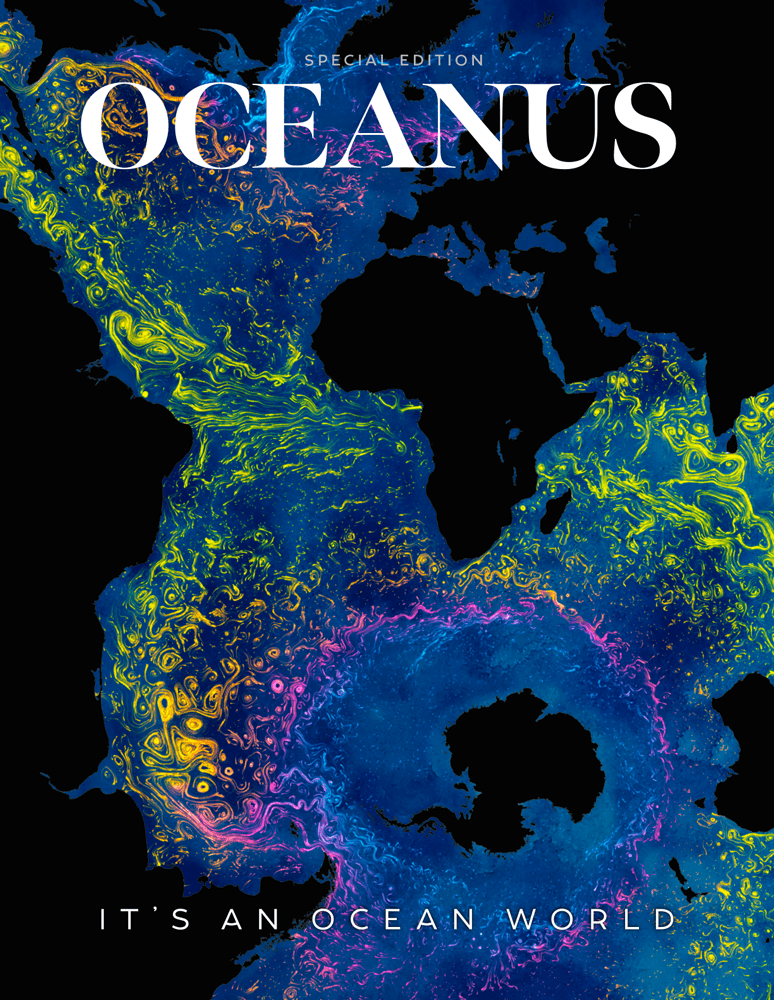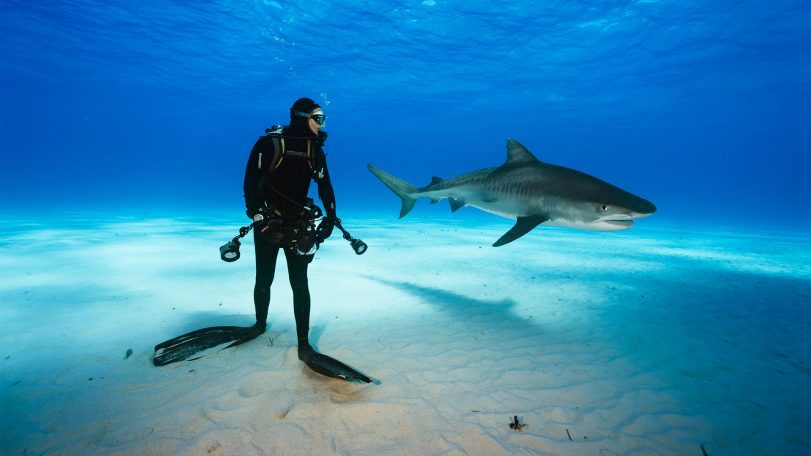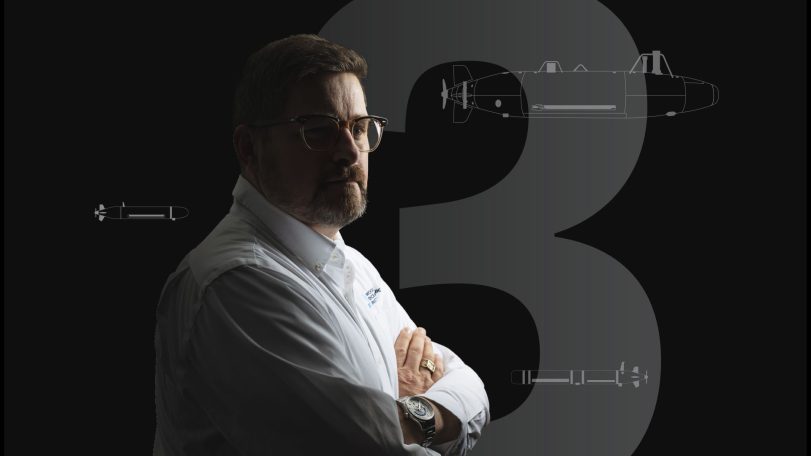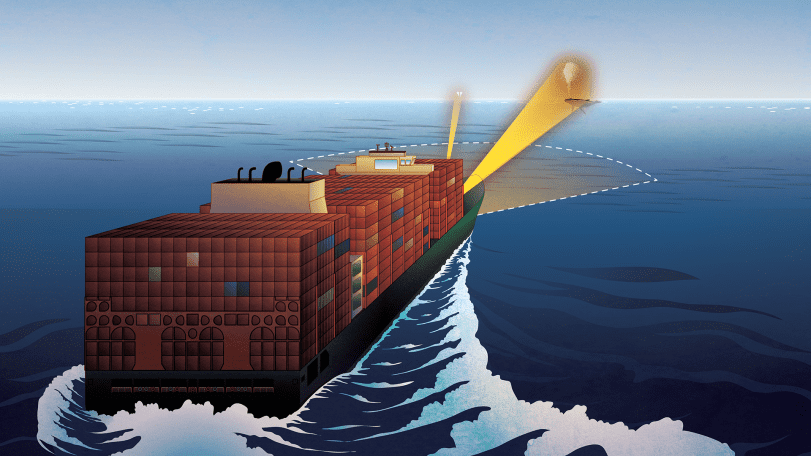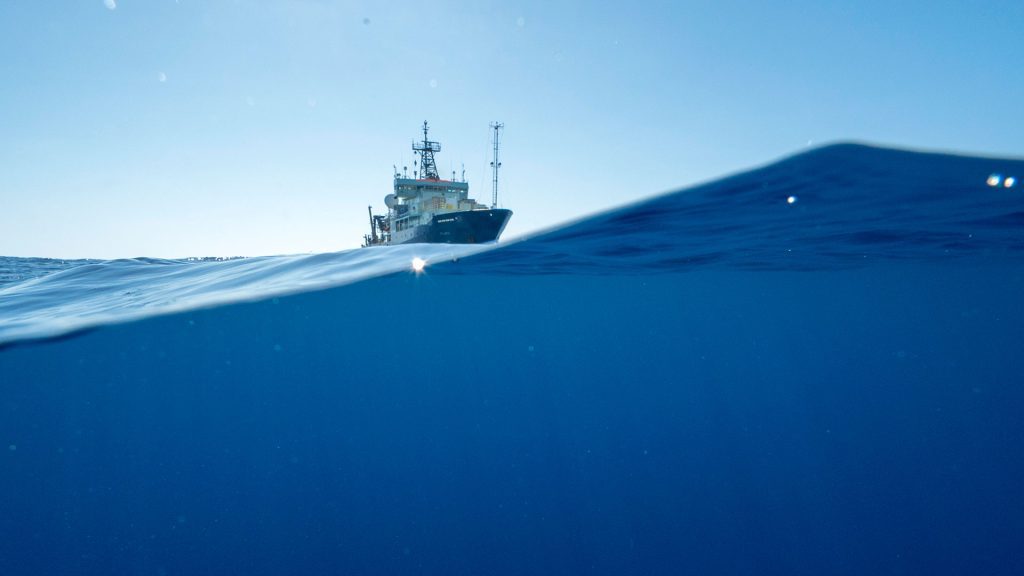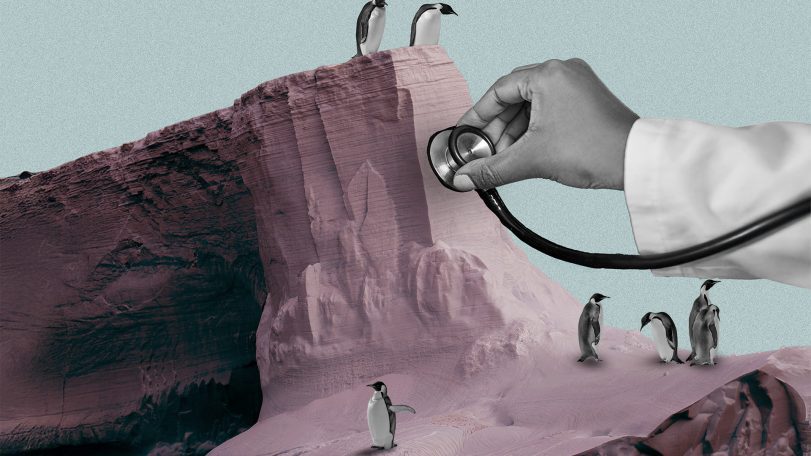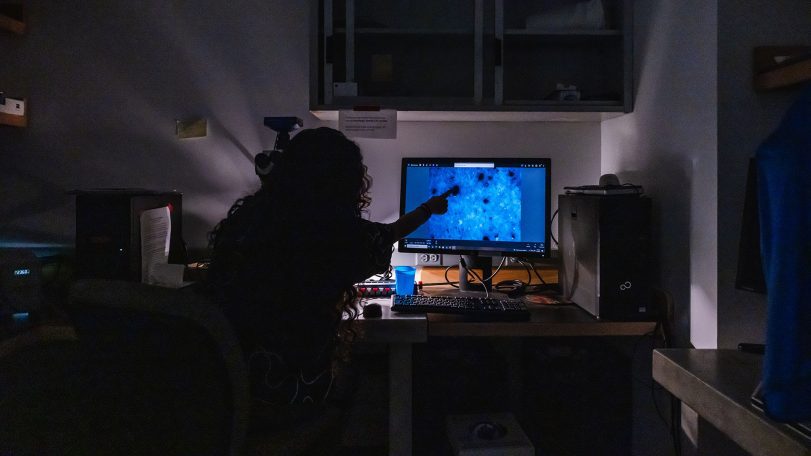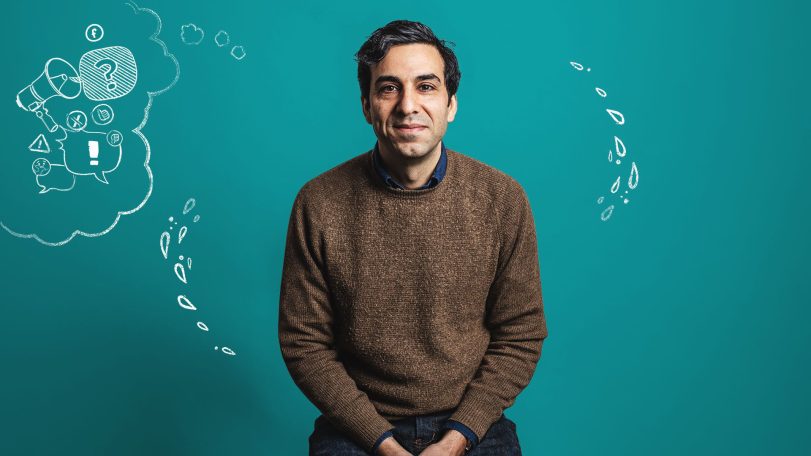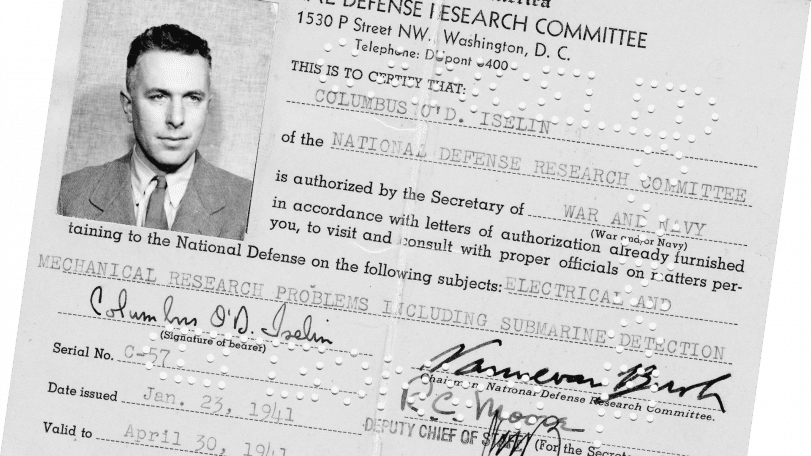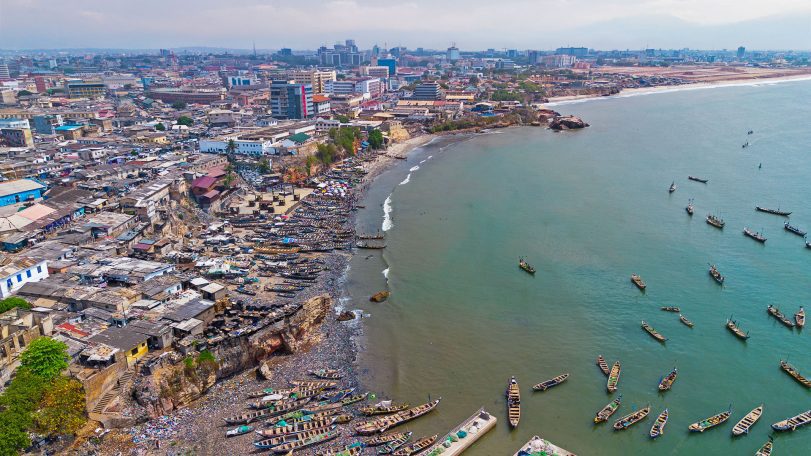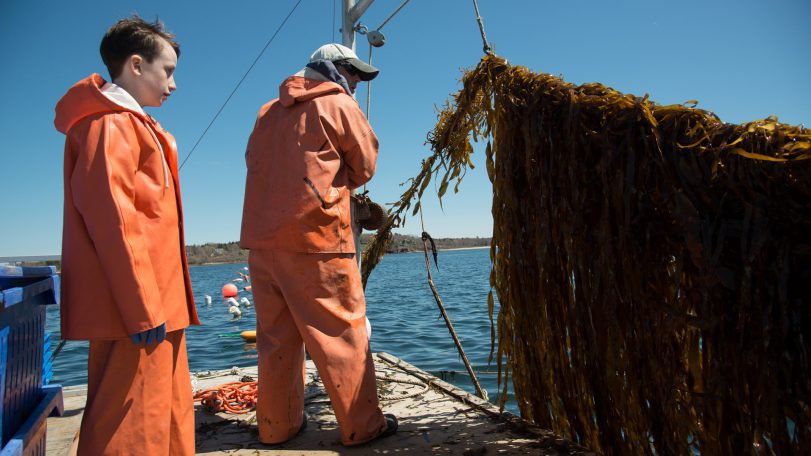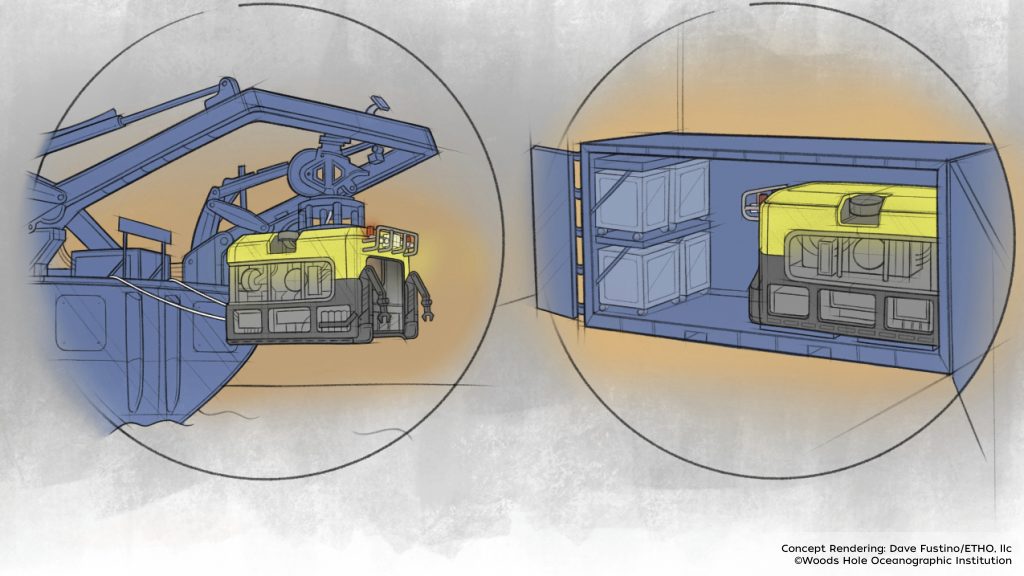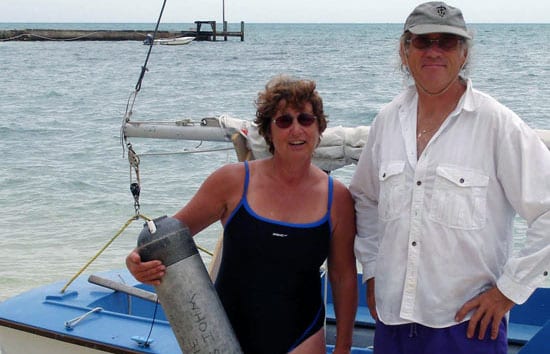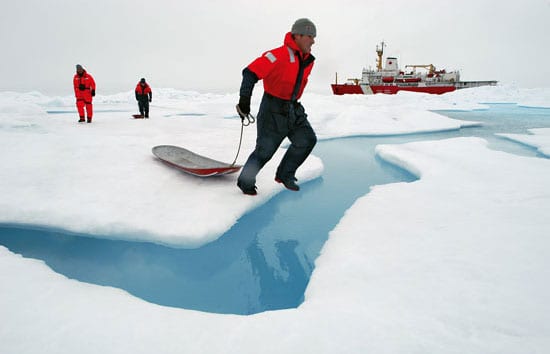
The Ocean (Re)Imagined
How expanding our view of the ocean can unlock new possibilities for life
Lessons from a lifetime of exploration
Award-winning ocean photographer Brian Skerry shares insights from a career spent around ocean life and science
The ocean weather nexus, explained
The vital role of ocean observations in extreme weather forecasting
Breaking down plastics together
Through a surprising and successful partnership, WHOI and Eastman scientists are reinventing what we throw away
Three questions with Carl Hartsfield
Captain Hartsfield, USN retired, discusses the role ocean science plays in our national defense

and get Oceanus delivered to your door twice a year as well as supporting WHOI's mission to further ocean science.
Our Ocean. Our Planet. Our Future.
Body snatchers are on the hunt for mud crabs
WHOI biologist Carolyn Tepolt discusses the biological arms race between a parasite and its host
A polar stethoscope
Could the sounds of Antarctica’s ice be a new bellwether for ecosystem health in the South Pole?
Secrets from the blue mud
Microbes survive—and thrive—in caustic fluids venting from the seafloor
Top 5 ocean hitchhikers
As humans traveled and traded across the globe, they became unwitting taxis to marine colonizers
Following the Polar Code
Crew of R/V Neil Armstrong renew their commitment to Arctic science with advanced polar training
Harnessing the ocean to power transportation
WHOI scientists are part of a team working to turn seaweed into biofuel
Casting a wider net
The future of a time-honored fishing tradition in Vietnam, through the eyes of award-winning photographer Thien Nguyen Noc
Gold mining’s toxic legacy
Mercury pollution in Colombia’s Amazon threatens the Indigenous way of life
How do you solve a problem like Sargassum?
An important yet prolific seaweed with massive blooms worries scientists
Ancient seas, future insights
WHOI scientists study the paleo record to understand how the ocean will look in a warmer climate
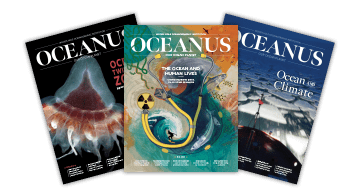
Looking for something specific?
We can help you with that. Check out our extensive conglomeration of ocean information.
Rising tides, resilient spirits
As surrounding seas surge, a coastal village prepares for what lies ahead
Whistle! Chirp! Squeak! What does it mean?
Avatar Alliance Foundation donation helps WHOI researcher decode dolphin communication
We can’t do this alone
For marine chemist Adam Subhas, ocean-climate solutions don’t happen without community
How WHOI helped win World War II
Key innovations that cemented ocean science’s role in national defense
Life at the margins
Scientists investigate the connections between Ghana’s land, air, sea and blue economy through the Ocean Margins Initiative
Grits, storms, and cosmic patience
As storms stall liftoff, Europa Clipper Mission Team member Elizabeth Spiers patiently awaits the biggest mission of her life
New underwater vehicles in development at WHOI
New vehicles will be modeled after WHOI’s iconic remotely operated vehicle, Jason
Learning to see through cloudy waters
How MIT-WHOI student Amy Phung is helping robots accomplish dangerous tasks in murky waters
Dust Busters for the Oceans
Like most living things, microscopic marine plants need iron and other minerals to live and…
Analyzing Ancient Sediments at Warp Speed
Like a toy out of a science fiction story, the X-ray fluorescence core scanner reveals intimate details of the composition of ancient mud and sediment–which can contain a variety of clues about past climate and environmental conditions on Earth–without breaking the surface. In a matter of hours, the XRF simultaneously captures digital photographs and X-ray images of every millimeter of a core sample, while detecting the presence of any of 80 chemical elements.
Small Island. Big Ocean.
This week, more than 200 WHOI scientists and graduate students will brave the balmy trade…
An Ocean Warmer Than a Hot Tub
Scientists have found evidence that tropical Atlantic Ocean temperatures may have once reached 107°F (42°C)—about…
Graduate Student Discovers an Unusual New Species
Sheri Simmons gets into the rugged wilderness as often as she can, backpacking in Newfoundland,…
Float 312, Where Are You?
The ocean is so enormous, even a fleet of 2,338 ocean-monitoring instruments can sail into…
Under-ice Floats Offer a ‘Breakthrough’
The Arctic Ocean, home to fierce winds, punishing temperatures, and thick sea ice, is no place for wimpy people?or machines. So when WHOI physical oceanographers Peter Winsor and Breck Owens set out to explore the largely unknown currents beneath the polar sea ice, they had to design an instrument with true grit. (Fifth in a five-part series.)
A Sentry at the Atlantic Gateway
Here’s an easy recipe to change Earth’s climate: Just add more fresh water to the…
The Flywheel of the Arctic Climate Engine
A key component of the Arctic climate clockworks is the Beaufort Gyre?a bowl of cold, icy, relatively fresh waters north of Alaska that is swept by prevailing winds into a circular swirl larger than the Gulf of Mexico.
Flying Blind in the Ice Factory
Al Plueddemann wants to push the envelope and fly a robotic vehicle into the wild…
Is Global Warming Changing the Arctic?
In the Arctic, the air, sea ice, and underlying ocean all interact in a delicately balanced system. Four ambitious Arctic projects are pulling back the icy veil that shrouds our understanding of the Arctic Ocean?s role in our climate system. (First of a five-part series.)
To Find Whales, Follow Their Food
The average adult right whale consumes about a ton of food a day, eating billions…
